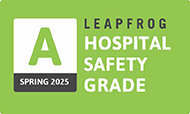


If you have occasional breast pain, you’re not alone — most women have it at some time in their life. But there are ways to help manage it — and some things you’re doing might be making it worse.
Breast pain, also called mastalgia, is classified as either cyclic or noncyclic.
Cyclic breast pain is related to your menstrual cycle, and it’s the most common type. It’s usually a dull, aching pain and it usually affects both breasts, especially the upper and outer part of your breasts. Your breasts may feel lumpier than usual, and they may even swell. Cyclic pain tends to get worse right before your period, then eases up afterward. It’s not fun, but it’s normal and not a sign of cancer or any other serious condition.
Noncyclic breast pain is not related to your menstrual cycle. It’s usually only in one spot on one breast, and it’s more common after menopause. It’s often a tight, burning pain. If you have noncyclic breast pain, or if your breast pain interferes with your life, see your doctor.
If your breast pain is clearly cyclic, or if you’ve already seen your doctor and ruled out a serious condition, here are eight ways to help manage the pain or to keep from making it worse:

Identify your risk factors and what to do if you are at risk.